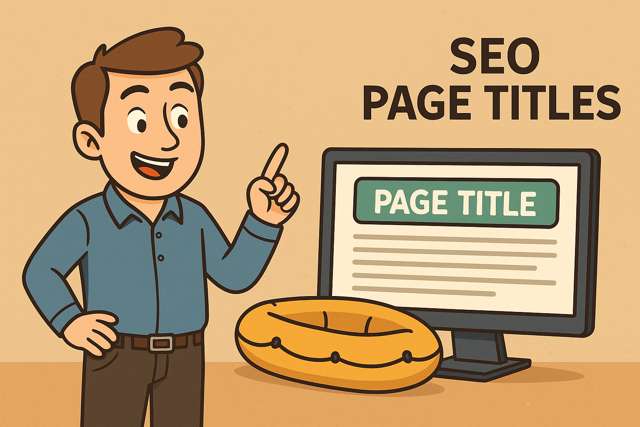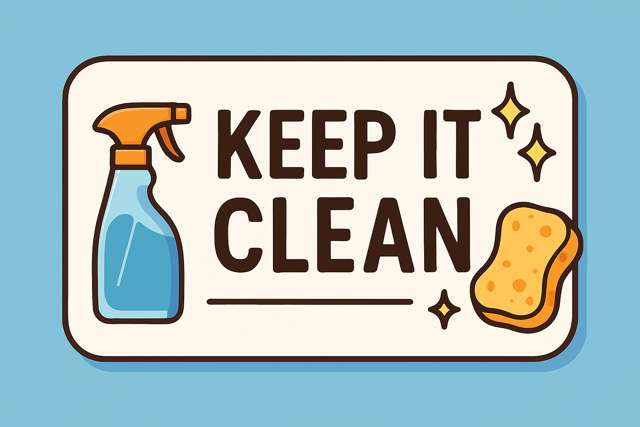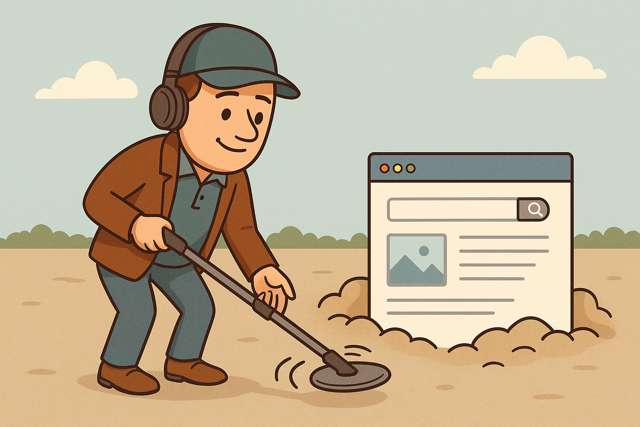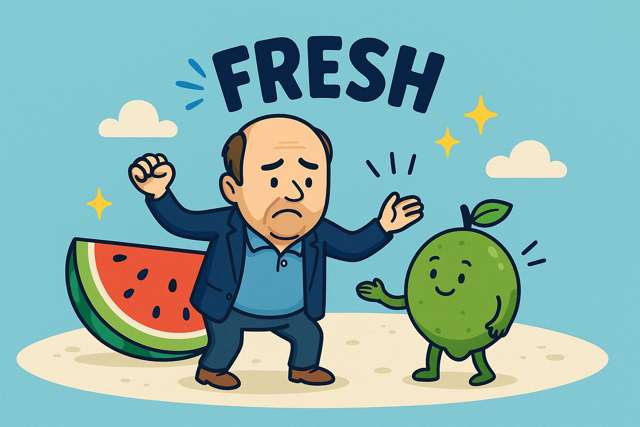Introduction: What Is On-Page SEO?
On-page SEO is like tidying your house before guests arrive — but the guests are Google’s bots, and they judge everything. If your titles are messy, your images unlabeled, and your content confusing, you’re basically serving tea in a toilet.
I’m quite clever — well, on a lower level — but my brain finds it hard to comprehend all this technical bullshit… phases, tags, meta nonsense. So I’ll do my best to explain it like a simpleton. Me!
Let’s break it down like this: on-page SEO is anything you can control on your website to help Google understand what your page is about, why it matters, and why it should rank higher than Darren’s cobbled-together nonsense.
But that’s only half the story — off-page SEO covers everything happening away from your site, like backlinks, brand mentions, and reputation signals. You can’t fully control it, but it still plays a big part in how Google ranks you.
1. Page Titles That Actually Say Something

Your page title is the first thing Google and users see. It’s got to scream, “this is what my page is about.”
Bad: “Home”
Worse: “Page 1”
Good: “Buy Affordable Fishing Rods – UK Tackle Shop”
The title should include the keyword you want to rank for and something unique that makes users click. Think of it as your site’s pick-up line. If it’s boring, vague, or off-topic — swipe left.
Where it goes:
htmlCopy<head>
<title>Darren’s Discount Fishing Rods – Buy Online</title>
</head>
Pro Tip: Keep it under 60 characters or Google will chop it off mid-sentence like Darren’s last haircut.
2. Headings (H1, H2, H3…)
Proper headings = proper structure. Google scans your site like a table of contents.
- H1: The big one — the page’s main headline. Use only one.
- H2: Section headings — break your content into chunks.
- H3: Subpoints under your H2s. Don’t go mad with H4s unless you’re writing a thesis.
Example:
htmlCopy<h1>Darren’s Fishing Tackle Shop</h1>
<h2>Our Rods</h2>
<h3>Carbon Fibre Rods</h3>
Bonus: Clear headings help users skim-read, which they all do. Especially Darren.
3. Meta Descriptions That Don’t Sound Like a Robot
Meta descriptions are the little blurb under your page title in search results. This is your chance to make a pitch. So pitch!
Bad: “We sell quality fishing rods.”
Good: “Fishing rods, reels, and bait — affordable and fast. Delivered from the UK. No gimmicks, just solid tackle.”
Where it goes:
htmlCopy<meta name="description" content="Affordable fishing rods, reels, and tackle from Darren’s shop. No gimmicks, just solid gear and fast delivery.">
Google might rewrite it — but that’s no excuse to half-arse it.
4. Using the Right Keywords Without Sounding Like a Twat
Keywords are what people type into Google. You want to be the result they find. But don’t stuff them in like you’re cramming biscuits in your pocket.
Use them:
- In titles
- In headers
- In the first 100 words
- In image alt tags
- Naturally throughout the copy
Tools like Google Autocomplete, AnswerThePublic, or Ubersuggest will help you spot real searches from real people.
Bonus Tip: Long-tail keywords (like “best carp fishing rod under £100 UK”) are easier to rank for than generic ones like “rods”.
5. Alt Text for Images (Because Google Can’t See)
Google’s blind. Literally. It can’t see images, only read descriptions.
Bad:
htmlCopy<img src="rod1.jpg" alt="image123">
Good:
htmlCopy<img src="rod1.jpg" alt="9ft carbon fibre carp fishing rod with cork handle">
Use alt text to describe what the image shows. It helps with SEO and accessibility. And no, “image.jpg” doesn’t cut it.
Extra Tip: If it’s a decorative image (like a background wave), you can leave alt blank.
6. URL Structure: Keep It Clean, Not Like Darren’s History

A messy URL is a red flag to both bots and users.
Bad:/product?id=7283&cat=fishing&sort=desc
Good:/fishing-rods/carp/9ft-carbon-rod
Use:
- Lowercase
- Hyphens-not_underscores
- Real words
- Keywords when it makes sense
Google likes predictability. And users like knowing what they’re clicking.
7. Internal Linking: Help People (and Bots) Find Stuff

Internal links keep users exploring. They also help Google discover more pages on your site.
Instead of saying:
“Click here for our guide.”
Say:
“Check out our carp rod buying guide.”
Link to:
- Relevant blog posts
- Product categories
- Comparison pages
- About/contact pages when it makes sense
Use links like breadcrumbs, not like glitter. Thoughtful and helpful.
8. Content Length and Quality: How Much Is Too Much?
If your page has under 300 words, Google’s not interested. It assumes you’ve phoned it in.
Sweet spot:
- 800–1,500 words for most blog posts
- 2,000+ if you’re doing an ultimate guide or heavy research
Longer content tends to rank better if it stays helpful, engaging, and easy to read. Don’t add fluff. Add value.
Structure tip: Break up text with:
- Bullet points
- Subheadings
- Images
- FAQs
9. Image Sizes and Load Time
A slow site = a site Google demotes. And your 10MB photo of a trout isn’t helping.
How to fix it:
- Compress images using TinyPNG or Squoosh
- Use WebP format where possible
- Stick to 150–200KB max per image
- Set width and height in your HTML or CSS
Bonus Tip: Lazy-load your images with loading="lazy" to delay off-screen content.
10. Mobile Friendliness

60%+ of all searches are now mobile. If your site’s broken on phones, you’re losing traffic. End of.
Test it: Google Mobile-Friendly Test
What to check:
- Text readable without zoom
- Buttons big enough to tap
- No horizontal scrolling
- No annoying pop-ups
Don’t assume your theme is “mobile-friendly” — check it yourself.
11. Schema Markup (for the Brave)
Schema is code that gives Google extra info about your page.
Use it for:
- Products: price, in-stock, rating
- Articles/blogs: author, date, category
- FAQs: yes/no answers (collapsible in search)
- Reviews: user testimonials
You can use plugins (like Rank Math or Yoast) or do it manually with Google’s structured data helper.
Be honest with it. If you fake 5-star reviews in your schema, Google will slap you.
12. External Links (And Why They Matter Too)
Linking out might feel like you’re sending users away — but it shows you’ve done your homework.
Link to:
- Trusted sources (Wikipedia, GOV.UK, WebMD, etc.)
- Authoritative blogs or studies
- Tools or generators your readers might find useful
Google sees this as a sign that your content lives in the real world, not Darren’s echo chamber of “just trust me, bro.”
13. Content Freshness: Don’t Let It Go Stale
Google loves fresh content. If your page hasn’t been updated since 2017, it probably smells like digital mildew. Update blog posts with new stats, rewrite old paragraphs to improve clarity, and check your internal links still work.
Even minor edits show Google that your site is alive and maintained. Fresh content also gives readers a reason to come back — or trust what they’re reading isn’t outdated nonsense.
Set a reminder every few months to tidy things up. A living site ranks better than a forgotten one, and it stops Darren from quoting stats from 2009.

14. Common On-Page SEO Mistakes to Avoid
Let’s call this the Darren checklist:
❌ Using multiple H1s
❌ Stuffing keywords like a turkey
❌ Forgetting alt text
❌ Publishing 300-word posts
❌ Linking to broken pages
❌ Writing meta descriptions that don’t describe anything
❌ No internal linking
Fix these and you’re already ahead of 90% of local businesses.
15. FAQs About On-Page SEO
Q: Do I need to update my SEO regularly?
A: Yes. SEO fades. Revisit your content every 3–6 months and refresh it.
Q: Can I use AI to write content?
A: You can. But edit it. Google hates robotic filler.
Q: How many H1 tags can I use per page?
A: One. Just one. Your H2s and H3s do the rest.
Q: Should I include the keyword in the URL?
A: Yes, if it fits naturally.
Q: What’s the ideal blog post length?
A: Aim for 1,000–1,500 words unless it’s a deep dive.
Q: Are pop-ups bad for SEO?
A: Mobile pop-ups especially. Use sparingly.
Q: Do broken links hurt SEO?
A: Absolutely. They hurt trust and crawlability.
Q: Does grammar matter?
A: Yep. Google reads like a grammar snob.
Q: Should every page have a meta description?
A: Yes. Even if Google sometimes rewrites it.
Q: Are outbound links bad?
A: No. Smart linking builds trust.
Conclusion: Don’t Let Your Site Be Darren’s
On-page SEO isn’t dark magic. It’s cleaning up your digital house so Google and real humans feel welcome.
Get your titles right. Use one H1. Write for people, not robots. Use your keywords wisely. Compress your images. Add schema if you dare. Link smart. Update often.
Don’t be lazy Darren, uploading 10MB trout pics and stuffing “best rods UK” into every other line. Be sharp. Be structured. Be someone Google actually wants to rank.
Leave a Reply